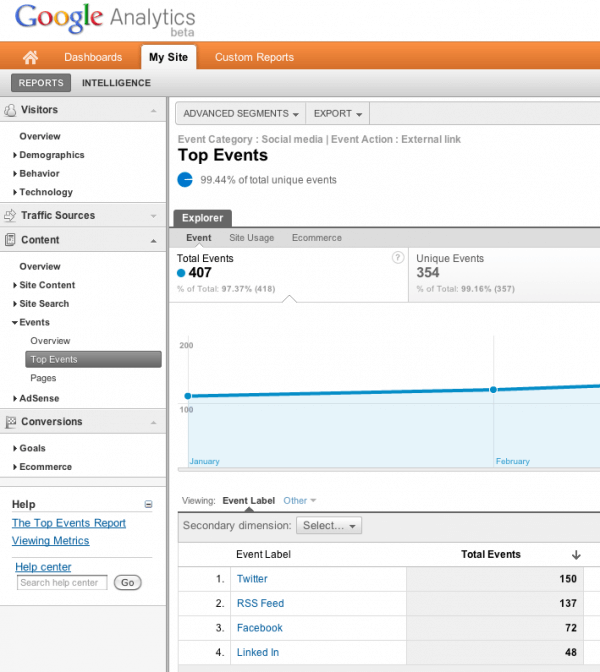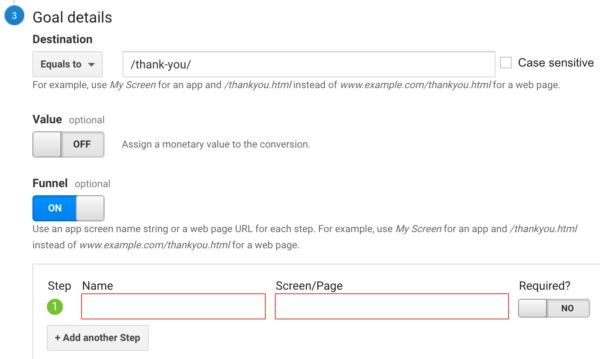What Data Is Google Analytics Goals Unable to Track: Learn the Limitations
Wiki Article
Discover the Limitations of Google Analytics Goals: Introducing the Information Kind That Remain Untrackable
As services progressively depend on data-driven decision-making, comprehending the limitations of devices like Google Analytics ends up being critical. While Google Analytics Goals offer beneficial insights into user interactions, there exist data types that thwart tracking, posing obstacles to a detailed understanding of customer behavior.Incomplete Individual Journey Tracking
Insufficient customer journey tracking within Google Analytics can impede the capacity to properly assess customer actions. When the customer trip is not completely tracked, there are spaces in the information that stop a detailed understanding of just how customers connect with an internet site. This absence of insight can lead to missed out on opportunities for optimization and enhancements to the customer experience.One typical problem with incomplete customer journey tracking is the lack of ability to see the full path that individuals take in the past finishing an objective or leaving the site. Without this information, it is challenging to recognize where individuals might be encountering challenges or rubbing factors that stop them from transforming. Additionally, insufficient monitoring can cover the effect of specific marketing initiatives or internet site adjustments on user habits.
To resolve this constraint, it is vital to establish up appropriate monitoring devices within Google Analytics to record the entire customer trip. This might entail establishing up event monitoring, objective funnels, or making use of devices like Google Tag Supervisor to guarantee that no essential interactions go unrecorded. By acquiring a comprehensive view of the customer trip, web site owners can make even more educated decisions to boost user involvement and drive conversions.
Acknowledgment Difficulties
Navigating with attribution obstacles in Google Analytics needs a detailed understanding of just how various touchpoints add to the overall conversion process. Attribution difficulties emerge from the intricacy of modern-day customer journeys, where individuals connect with numerous networks before converting. Google Analytics supplies various attribution models like first touch, last touch, and direct, each offering a different viewpoint on exactly how credit history is assigned to touchpoints along the conversion course. These designs might not always accurately reflect the real influence of each touchpoint on the conversion.One common attribution obstacle is the problem in associating conversions to the appropriate source, particularly in instances where individuals interact with multiple channels prior to transforming. This can cause errors in figuring out which advertising efforts are driving one of the most conversions. In addition, cross-device monitoring presents one more attribution difficulty, as users commonly switch between devices during their journey, making it challenging to track their interactions effortlessly. Marketers must very carefully translate and analyze attribution information to make informed decisions and maximize their marketing methods efficiently.
Offline Conversions
Given the obstacles related to attributing conversions accurately in online channels, the dimension of offline conversions offers a substantial chance for marketing experts looking for a more extensive understanding of their consumers' journey. Offline conversions refer to actions that consumers take in the physical world, such as making purchases in brick-and-mortar shops or over the phone, participating in occasions, or involving with published products - what data is google analytics goals unable to track. These conversions are vital for organizations that operate both online and offline, as they offer beneficial understandings right into the performance of advertising and marketing campaigns throughout various touchpointsTracking offline conversions generally posed a considerable challenge for marketing experts, as it was challenging to attach these activities back to particular on the internet interactions precisely. With improvements in modern technology, such as the integration of CRM systems, special identifiers, and promo code codes, businesses can now bridge the space in between online and offline information to obtain a more all natural view of customer behavior. By properly measuring offline conversions, marketers can optimize their strategies, allocate sources a lot more efficiently, and ultimately enhance the general client experience.
Cross-Device Monitoring
Cross-device tracking plays an essential duty in understanding the interconnected nature of consumers' digital communications across multiple gadgets. In today's omnichannel globe, where users perfectly change between desktop computers, tablet computers, and mobile phones, tracking their habits throughout these gadgets is important for marketers to get a comprehensive sight of their client trip.
Furthermore, privacy concerns and regulations such as GDPR and CCPA have better difficult cross-device monitoring. With users requiring more control over their data and enhanced restrictions on tracking modern technologies, marketing experts must discover privacy-compliant and click to read innovative means to attach user interactions across gadgets.
Dynamic Material Interaction
Comprehending individual interaction with dynamic web content is pivotal in enhancing electronic marketing methods for boosted target market interaction. Dynamic web content describes website aspects that alter based upon individual actions, preferences, or other elements, offering an individualized experience. Tracking customer communications with vibrant content poses difficulties for typical analytics devices like Google Analytics.While Google Analytics can track standard communications like clicks and web page sights, it might battle to capture more nuanced involvements within vibrant content. what data is google analytics goals unable to track. Metrics such as time invested on specific vibrant components, float activities, or interactions within pop-ups are typically not easily measurable utilizing common tracking methods. This limitation prevents marketing professionals' capacity to completely grasp just how customers are involving with vibrant content and customize their methods as necessary

Final Thought
To conclude, Google Analytics objectives have restrictions in tracking incomplete user journeys, attributing conversions precisely, catching offline conversions, tracking cross-device interactions, and measuring dynamic material interaction. These restraints highlight the importance of exploring additional tracking methods and tools to obtain an extra detailed understanding of customer habits and conversions past what Google Analytics can offer.While Google Analytics Goals offer valuable insights right into user communications, there exist data kinds that avoid monitoring, posing obstacles to next an extensive understanding of customer actions.Incomplete individual journey tracking within Google Analytics can prevent the ability to properly examine individual actions. When the user trip is not fully tracked, there are spaces in the information that stop a detailed understanding of how individuals communicate with a website.One typical problem with incomplete individual journey tracking is the inability to see the full course that users take previously finishing a goal or leaving the website. By gaining a detailed view of the customer trip, internet site proprietors can make more enlightened choices to enhance customer engagement and drive conversions.
Report this wiki page